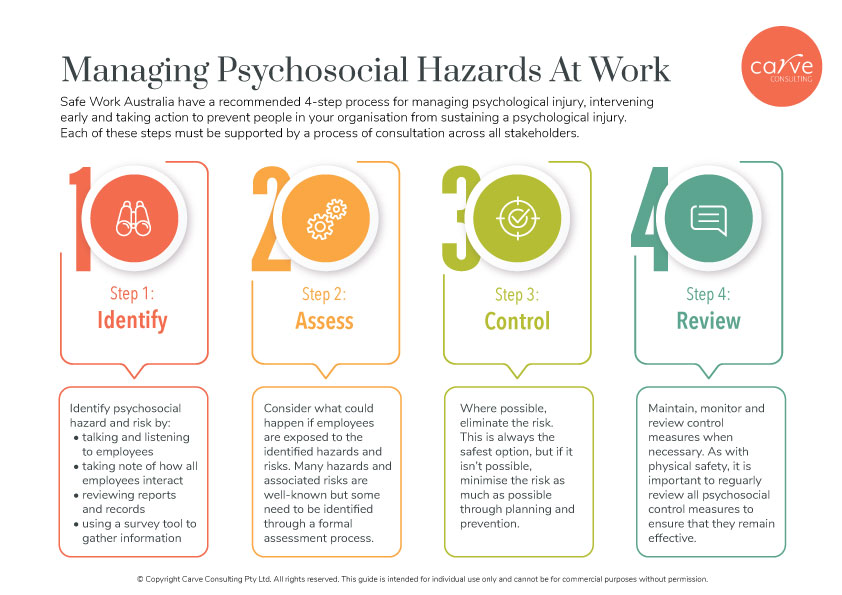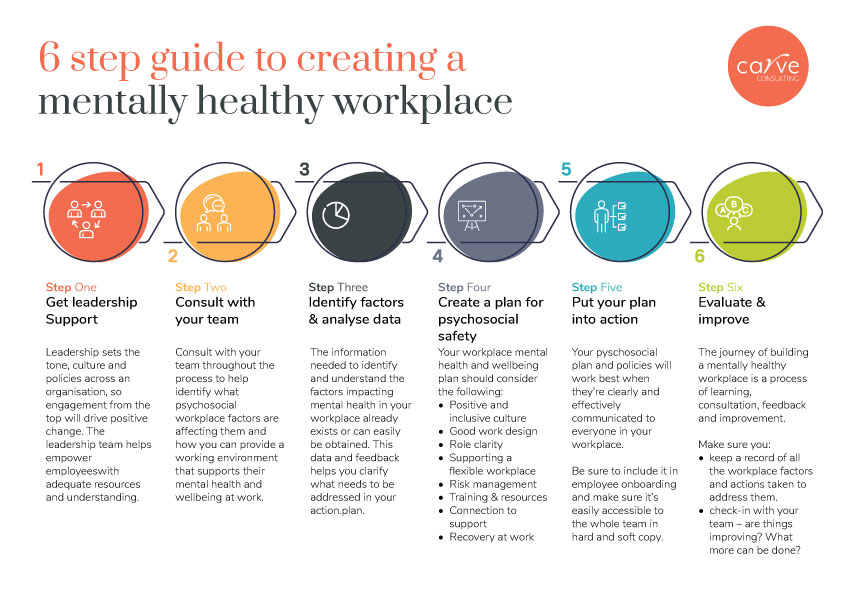Avoiding physical hazards at work can seem quite straightforward – make sure there’s nothing in the work environment that can injure employees, contractors or visitors. But workplace hazards are more than just physical. Each workplace is also responsible for the psychosocial wellbeing of people as well.
Often, when we think of psychosocial risk in the workplace, we think of bullying or harassment. But risks included in legislation also include many behaviours and situations typically discussed under ’employee engagement’, and are actually recognised psychosocial risks.
Psychosocial safety is more than just a nice to have, it’s a mandatory requirement of every state’s WHS/OHS Act. Each Act defines health as both physical and psychological. Some states have a specific Code of Practice for managing psychosocial hazards, while others rely on organisations meeting the general requirements of the states WHS/OHS Act.
The cost of poor psychosocial workplace wellbeing
Psychosocial wellbeing isn’t just about the niceties of workplace culture. It’s not the fruit bowl in the kitchen or the team building days. The cost and impact of a lack of comprehensive workplace wellbeing infiltrates all parts of an organisation and society.
Mental health conditions made up 9.2%, or 11,700, of serious Work Health and Safety (WHS) claims in 2021-22. Although this is slightly less than in 2020-21, it is still much higher than ten years ago. This increase is due to the number of serious claims for mental health conditions rising by 3,500, or 43.3%, since 2011-2012.
Workplace mental health conditions are among the most expensive types of workplace injuries. They result in much more time off work and higher compensation compared to physical injuries and diseases. In 2020-21, the median time lost for mental health condition claims was 34.2 working weeks and median compensation was $58,615, more than four times the median for all claims.

And of course, the silent cost of a psychologically unsafe workplace is turnover. People don’t speak up or report an incident, they just leave. You might loose your best and brightest, and be none the wiser to the real reason for their departure.
Factors that contribute to psychosocial hazards
When thinking of psychosocial hazards, the contributing issues that first spring to mind are things like bullying, harassment and assault. But as mentioned earlier, a much wider range of common factors can contribute to psychosocial hazards including:
- Emotional demand
- Role ambiguity
- Role conflict in tasks or value alignment
- Role overload & underload
- Job control & autonomy
- Group relationship conflict
- Group task conflict
- Manager support
- Co-worker support
- Praise & recognition
- Procedural justice
- Change consultation
- Workplace bullying
- Workplace violence and aggression
Any of these situations can arise due to change, uncertainty, poor leadership and behaviour not being addressed. The interplay between different factors can erode the organisational culture if not regularly reviewed.
Identifying and improving mentally healthy workplaces
In a safe working environment, a tangible commitment from the leaders is required to promote healthy practices, prevent psychosocial risks and support early intervention and recovery of employees. The key is to design all work practices to support a positive workplace culture where workers feel valued and engaged.
A psychosocial healthy workplace can be identified where:
- mental health is everyone’s responsibility
- systems, policies and procedures are integrated, address mental health specifically and are embedded across the organisation
- interventions are tailored to the needs of diverse work groups
- continuous evaluation and improvement are visible
If your workplace doesn’t have a code of practice or process for identifying and handling psychosocial wellbeing, there is a straightforward 4-step process that can be followed. If you’ve been involved in physical OHS processes these 4 steps will be very familiar.

The first step is identifying hazards and risks. Regular engagement surveys, across all domains and performance metrics, may point to potential psychosocial issues. Another option is the People at Work assessment tool. This multi-government sponsored initiative provides Australia’s first validated psychosocial risk assessment tool for workplaces of greater than 20 people. If low results are identified in engagement surveys or the People at Work assessment, a more granular investigation may be required to understand the underlying issues.
If you are looking to create a mentally healthy workplace or team environment, below is a 6-step guide to help the process.

Economic evidence suggests employers can save more than four dollars for every dollar they invest in evidence-based mental health interventions in the workplace. The cost benefits are through increased productivity and reduced costs. Not only is there a direct cost benefit, mentally healthy workplaces also help you attract and keep people in your team.
Creating a psychosocial safe work culture is an active process, requiring informed and capable leaders, skilled team management and awareness of team dynamics embracing agreed behaviours and values.
Originally posted 23/06/22. Updated 13/06/24 with recent statistics from Safework Australia of cost of mental health claims.
